Click on photo to enlarge. Scale line in photo equals 1cm unless otherwise specified.
* Species which are commonly encountered on the beach.
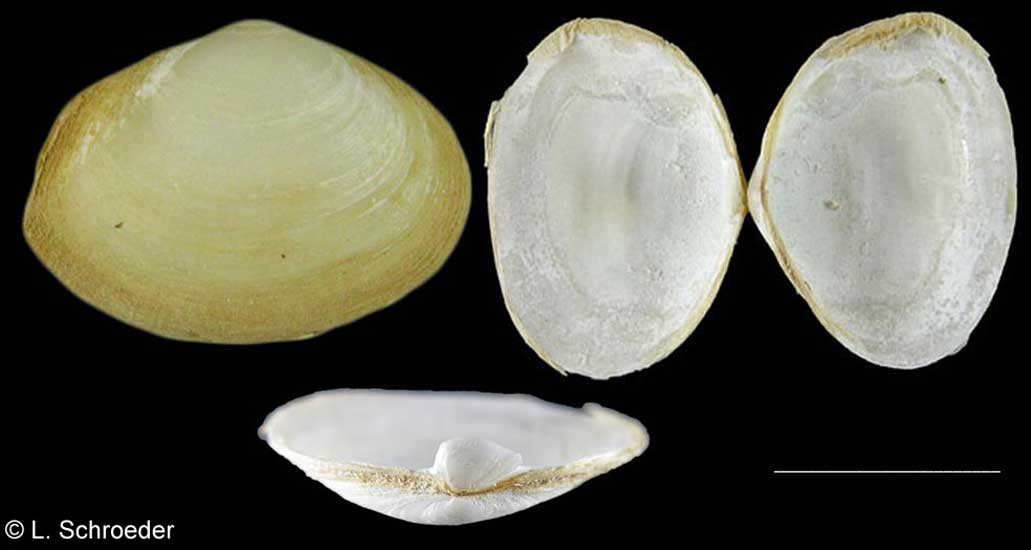
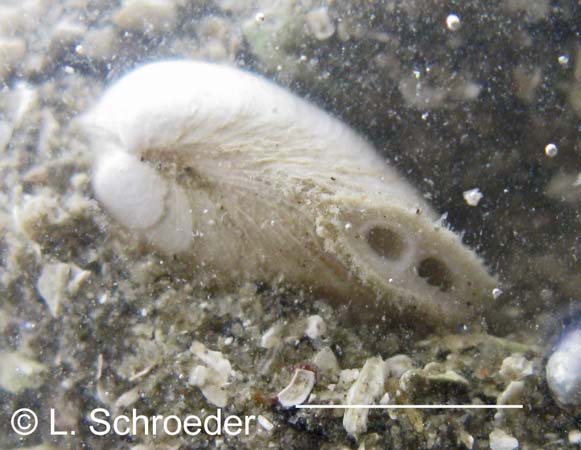
Nisqually Reach, WA
Thetis Island,
BC, intertidal
Cryptomya californica (Conrad, 1837)California Softshell-Clam
intertidal to 80m Peru to southern Alaska; Japan size to 37mm
This
is occasionally found intertidally. It prefers a somewhat muddy
location. The shell is thin and fragile. It exhibits a
chondrophore like all Myidae. This is the spoon-shaped projection
at the top of the left valve.
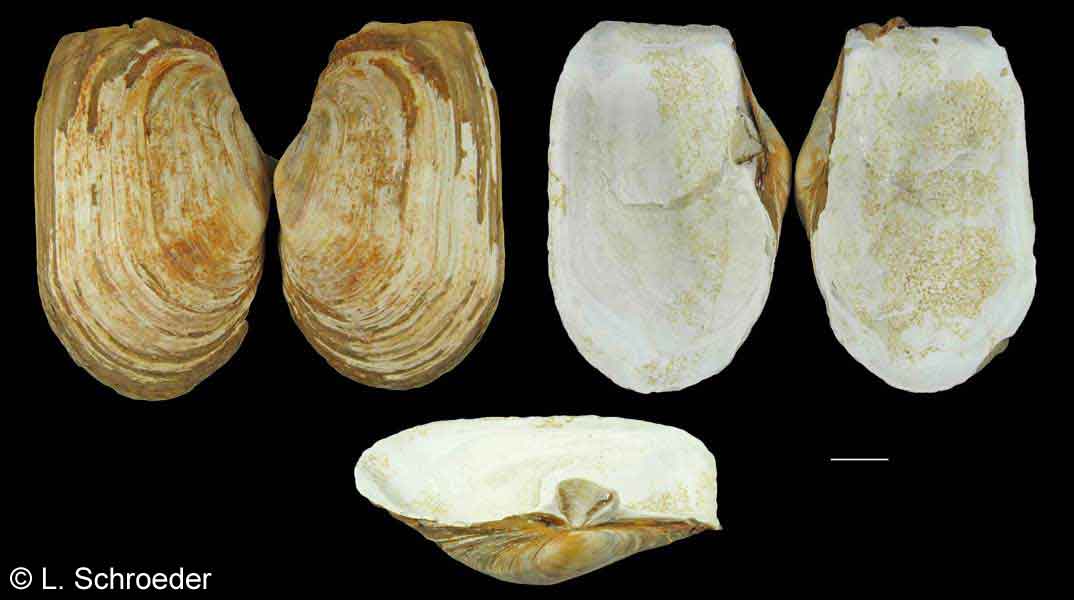
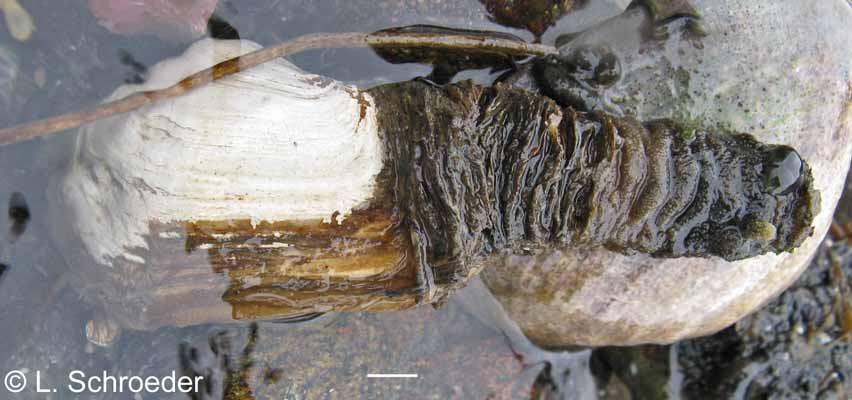
both - Petersburg, AK
freshly dead, found in a tidepool
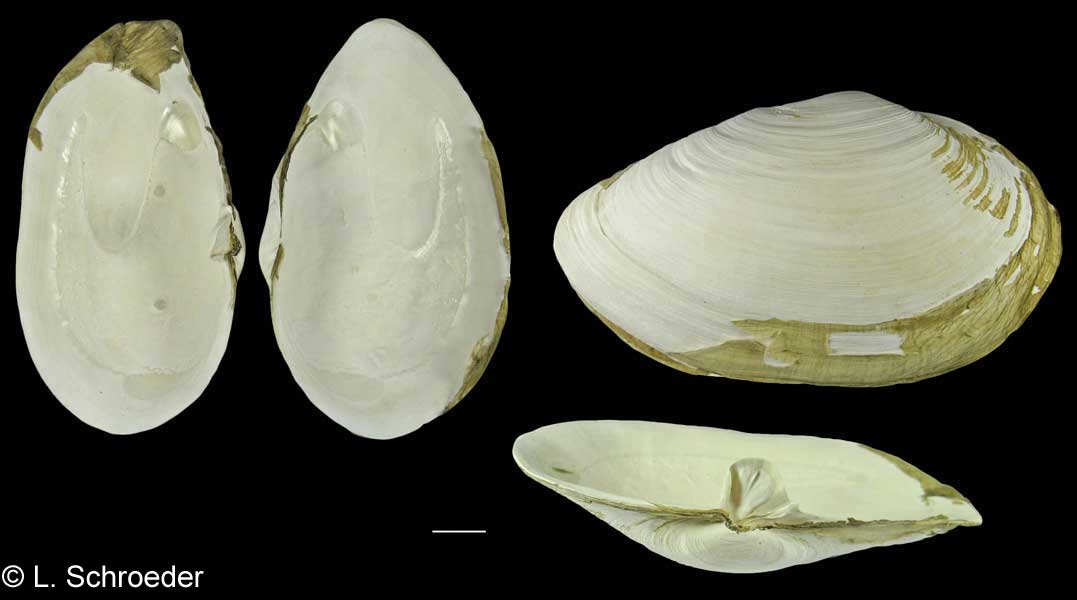
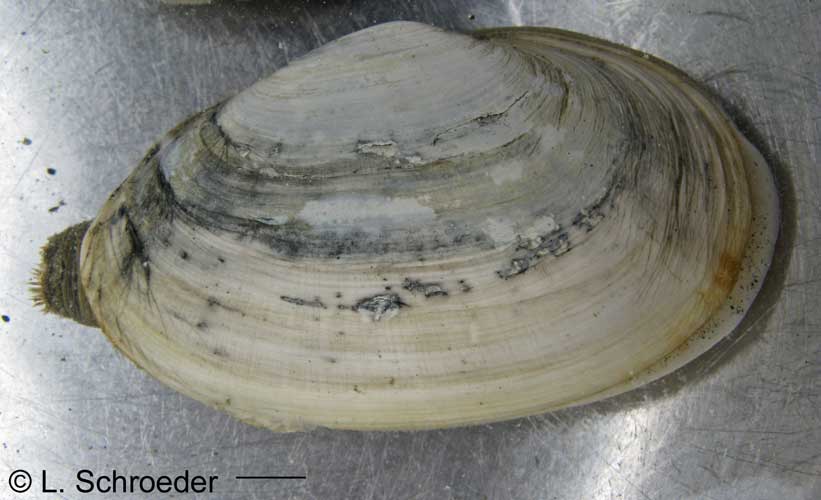
Semiahmoo Spit, WA
Thetis Island, BC
showing siphon and part
of foot, submerged in water
Mya arenaria Linnaeus, 1758Eastern Softshell-Clam *intertidal to 73m size to 170mm
southern California to northern Alaska; circumboreal, reaching south to Japan, Spain and North Carolina
This
was introduced to California over 130 years ago and has naturalized
itself all the way to Alaska. It is commonly found in both mud and
sand. The shell shape can be somewhat variable but it is usually
somewhat pointed at the front. The periostracum is thin and
readily flakes off.
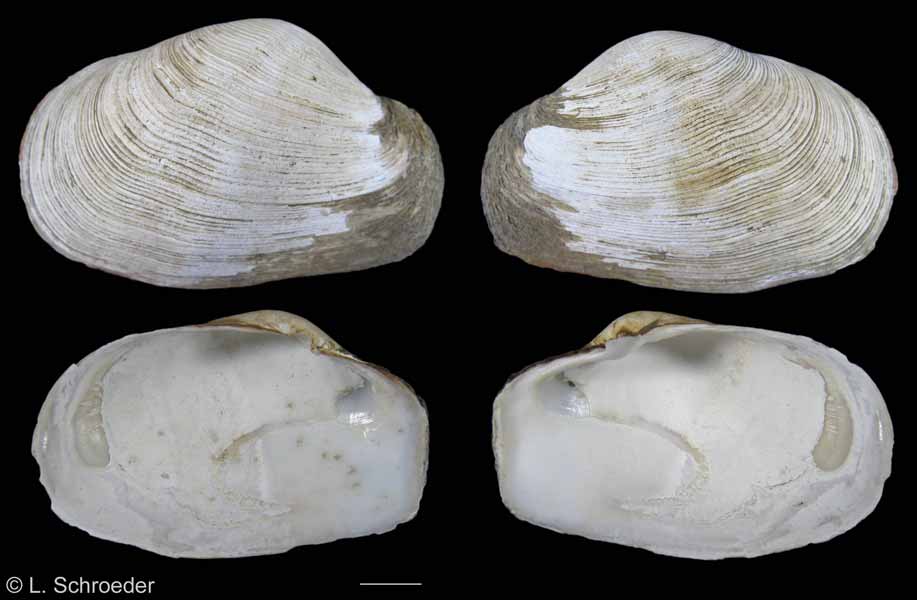 Whiskey Creek Beach, WA
Whiskey Creek Beach, WA
Mya truncata Linnaeus, 1758
Truncated Softshell-Clam
intertidal to 100m size to 85mm
northern Washington to northern Alaska; circumboreal and panarctic, reaching south to Japan, New England and Western Europe
This
is rarely found intertidally in its southern range, but commonly found
intertidally in Alaska. It prefers mud and sand. It can be
distinguished from M. arenaria
by its blunt posterior end and more of the periostracum remains adhered
to the shell. Also, the siphon has a tough covering that can
remain attached to the shell even after the animal has died and been
eaten, as shown by the photo above.
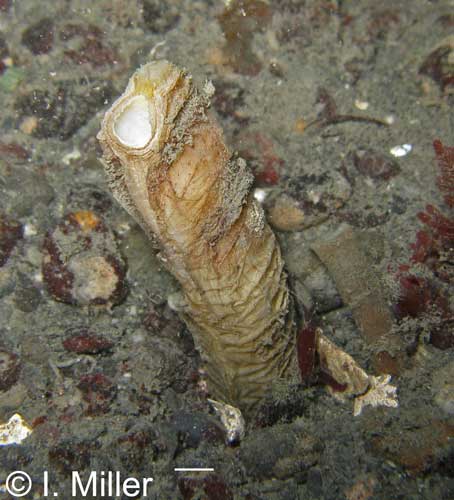 Freshwater Bay, WA, subtidal
Freshwater Bay, WA, subtidal
Bivalves
Family Myidae
Platyodon cancellatus (Conrad, 1837)
Boring Softshell-Clam
intertidal to 100m size to 76mm
northern Mexico to northern BC
This
is occasionally found intertidally. It bores into hard-packed
clay, mudstone or soft sandstone. The shell has a blunt posterior
end and a sculpture of low, wavy commarginal ribs.
This page last revised: 5-25-2019







